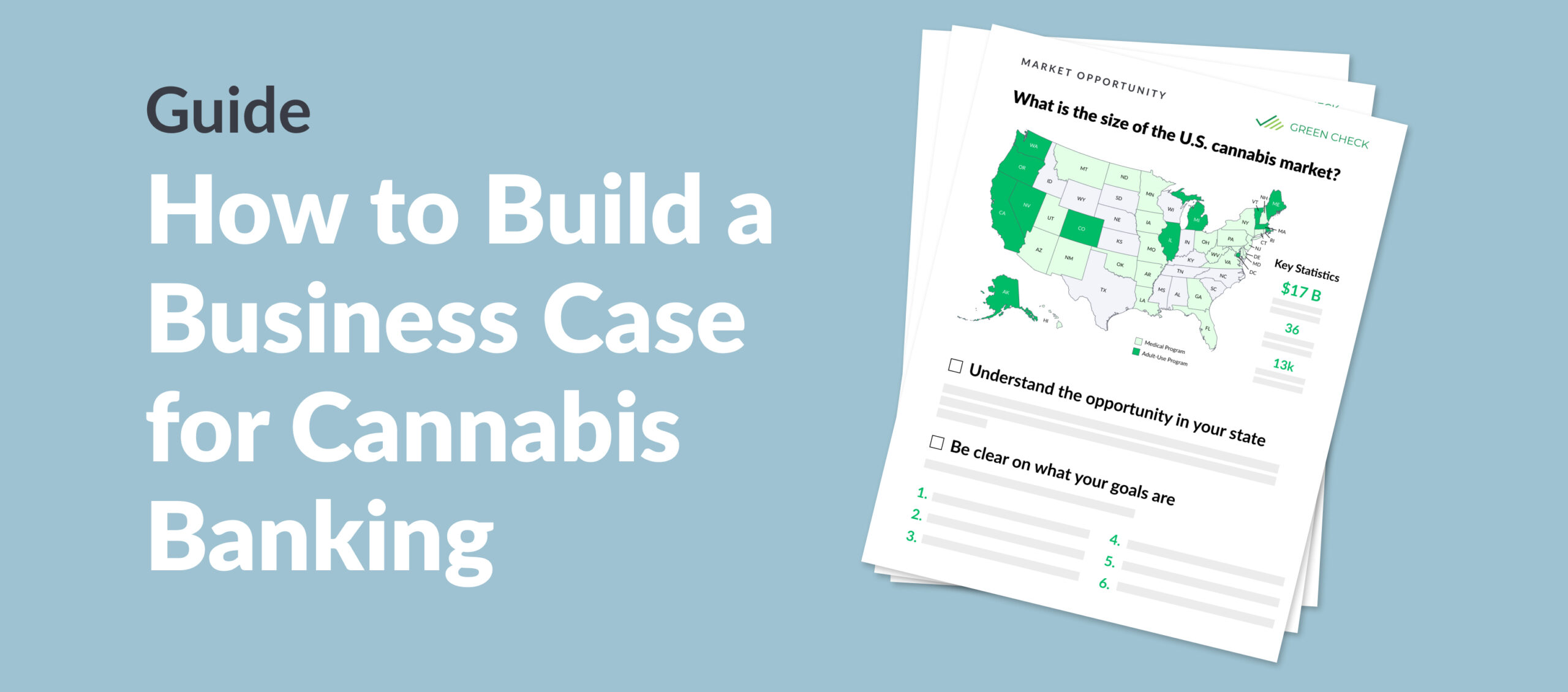Getting Your Board on Board: Articulate

This is the second part of a four-part series on how to educate your Board and other teams, articulate your plan, structure your program, and then implement (launch) the line of business.
Your education efforts have succeeded in raising your Board’s interest in understanding the risks and benefits of banking cannabis-related businesses (CRBs). They want to move forward, and now are asking you what it would take to establish a cannabis banking program at your financial institution. According to those with successful programs, the next stage is laying out the action steps for getting your institution from its current state – no cannabis banking – to the desired future state – cannabis banking at acceptable levels of risk. It’s time to articulate the plan.
Before you start scouring the internet for templates, or racking up thousands in consulting fees, consider this: there’s a good chance your organization already knows how to build a basic plan. The launch of a cannabis banking product line is not materially different from a decision to launch any other type of new product line. And if your organization can tackle the basics, then the later handoffs to legal, regulatory, accounting and other advisors becomes exponentially easier (and cheaper!) for your institution. At a time when earnings are hard to come by, using a streamlined approach for plan development conserves valuable resources. So how do you start? A time-tested management wisdom (succinctly framed in Stephen Covey’s landmark business book “The 7 Habits of Highly Successful People”) tells us to always Begin with the End in Mind.

Beginning with the end in mind means first defining what your mature cannabis banking program looks like, both financially and organizationally. This stage is not about defining process steps to perform due diligence. It’s not about writing operating procedures for how to open a cannabis banking relationship. It isn’t at all about the ‘building blocks’ to form the structures around your program. This stage is about imagining that it’s a year (or 2 or 3) from now, when the work you’re about to identify is all done, and being able to observe and measure your results. It is about articulating the organizational, operational and financial outcomes you hope to achieve. This future-state depiction should focus on three key areas:
- Financial Performance
- Risk Management
- Operational Oversight
- Gap Analysis
Financial Performance
Your vision for the financial performance of this product should include an assessment of the total addressable market in this underbanked industry, within a realistic market scope and span that you might actually achieve. While knowing the total number of CRBs in the United States is an interesting data point, it’s unlikely that your community or regional FI has the ability to serve a national base during its first year. So what does your addressable market look like on a more localized basis? And what percentage of that market might you realistically hope to capture during the first 12, 24 and 36 months of banking CRBs? Your assessment should be based on current competition for these accounts, as well as factoring in other competitors who might be at an exploratory stage. Assuming you can achieve a specified desired market share over a period of time, what does that look like in terms of your institution’s earnings? As you’re making these projections, you’ll also have to incorporate operating costs like marketing, account management or oversight, and monitoring and auditing. There is a good chance you can rely on figures for managing the accounts of other types of high-risk businesses, and can use those to ‘ballpark’ the CRB numbers. The overall profitability of these relationships was the primary driver that the Board members we talked with said ultimately helped them to overcome their risk aversion.
Risk Management
The risk management components of banking high-risk businesses are well-known and widely-documented. Even if your institution intentionally distanced itself from taking on so-called “high-risk” business accounts, there always have been “higher-risk” relationships for your teams to oversee. Applying those same practices for dealing with higher-risk accounts is where the majority of banks and credit unions choose to start as they launch cannabis banking. Executives stated they borrowed risk management techniques from other higher-risk areas, like banking money services business or convenience store accounts, and modified their programs from there to address the specifics of the cannabis-related accounts. As with any other product or service, risk management requires mastery of four responsibilities: (i) identify potential risks accurately and timely; (ii) measure risk exposures over time; (iii) monitor risk exposures routinely so you will know when risk has exceeded appetite; and (iv) control risk to acceptable levels by implementing a strong controls framework. It’s also true that adopting those four program elements – identify, measure, monitor and control – matches up with official regulatory guidance on risk management. Your plan should address how you will fulfill those four objectives.
Operational Oversight
Although you’ll be laying out more precise standards later, getting a broad sense of your operational readiness to oversee cannabis banking is important to the plan. Do you already have higher-risk programs to model this one after? Is your staff experienced in account opening due diligence and oversight, or will you need to upgrade their skills or add personnel? What about training programs – what will you need, how long will it take, and who will be responsible for delivering it? More importantly, who will need to attend and how often? Are your systems modern and fast enough to meet the demands of a high volume, high velocity environment? Getting the rank-and-file as prepared as those in the executive suite to adopt, embrace and effectively manage CRB relationships represents a serious undertaking in even the smallest institution. The nature of higher-risk banking leaves only a small margin for error, and the responsibility for execution rests squarely on your front line operations personnel.
Gap Analysis
The last part of the plan is a frank assessment of what’s missing today, from what you hope to create tomorrow. How confident are you in your institution’s current capability to generate successful outcomes? You may wish to define a scorecard-based approach to deciding what’s ready and what needs more attention. Exposing these scenarios to your Board gives them the visibility and data needed to decide whether to pursue cannabis banking. Chances are, there will be some gaps to fill, and that’s alright, as long as they’re known, documented, and you have a plan to close these gaps as you move along the path of progress.
If you’ve come this far, and your Board is STILL on board with cannabis banking, the next stage will be to structure your cannabis banking program by building the risk and compliance management frameworks, and operating policies and procedures, that will support your vision. As Stephen Covey also famously said, “To achieve goals you’ve never achieved before you need to start doing things you’ve never done before.” Here’s to doing new things!
If your institution needs expert guidance on building a cannabis banking program from the ground up, download our guide for building a business case here.